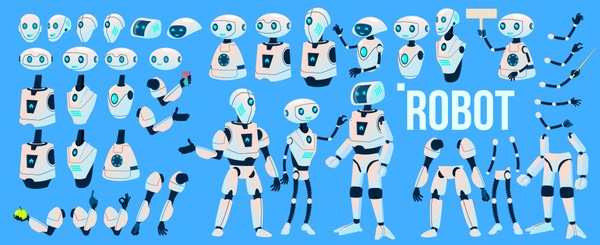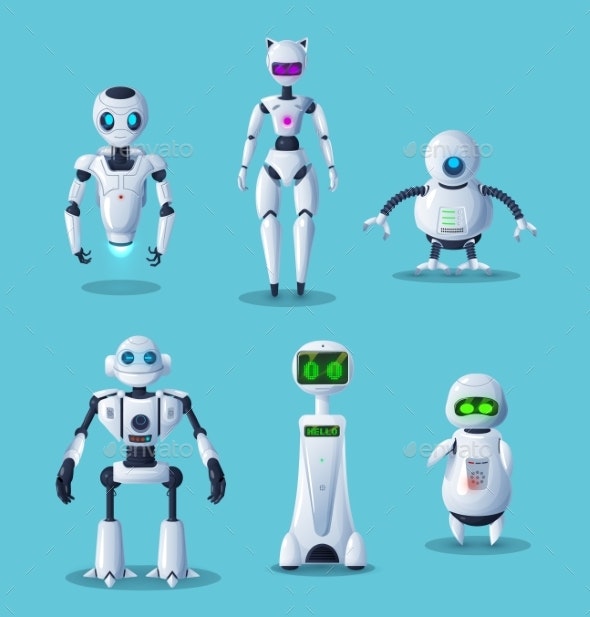
Introduction:
Robots have become an integral part of modern society, revolutionizing industries, enhancing productivity, and shaping the way we live and work. From manufacturing and healthcare to exploration and entertainment, robots come in a wide variety of shapes, sizes, and functionalities, each designed to perform specific tasks and functions. In this article, we'll explore the diverse world of robotics by delving into different types of robots, their applications, and their impact on various aspects of human life.
1. Industrial Robots:
Industrial robots are perhaps the most well-known type of robots, commonly used in manufacturing and production facilities to automate repetitive tasks and assembly processes. These robots are typically equipped with articulated arms, grippers, and sensors, allowing them to perform tasks such as welding, painting, assembly, and packaging with precision and efficiency. Industrial robots help improve productivity, reduce costs, and enhance worker safety by taking on dangerous or repetitive tasks in factory environments.
2. Collaborative Robots (Cobots):
Collaborative robots, or cobots, are designed to work alongside humans in shared workspaces, enabling close collaboration and interaction between robots and human workers. Unlike traditional industrial robots, which are often confined to cages or safety enclosures, cobots are equipped with advanced sensors and safety features that allow them to operate safely in close proximity to humans. Cobots are used in various industries, including automotive, electronics, and healthcare, to assist with tasks such as assembly, inspection, and logistics, enhancing productivity and flexibility in manufacturing environments .
.
3. Service Robots:
Service robots are designed to perform tasks and provide services in non-industrial settings, such as homes, hospitals, hotels, and retail stores. These robots come in a variety of forms, including cleaning robots, delivery robots, security robots, and customer service robots, and are equipped with sensors, cameras, and artificial intelligence (AI) algorithms to navigate and interact with their environments. Service robots help automate routine tasks, improve efficiency, and enhance customer experiences in various service industries, contributing to increased convenience and satisfaction for users.
4. Medical Robots:
Medical robots play a crucial role in healthcare, assisting surgeons, nurses, and other medical professionals in diagnosis, treatment, and patient care. Surgical robots, such as the da Vinci Surgical System, enable minimally invasive procedures with greater precision and control, reducing patient recovery times and complications. Rehabilitation robots help patients regain mobility and function after injury or surgery, while telepresence robots allow remote doctors to consult with patients and colleagues from anywhere in the world. Medical robots improve patient outcomes, enhance healthcare delivery, and expand access to specialized medical services, leading to better overall healthcare experiences.
5. Autonomous Vehicles:
Autonomous vehicles, including self-driving cars, trucks, drones, and unmanned aerial vehicles (UAVs), are equipped with sensors, cameras, and AI algorithms that enable them to navigate and operate without human intervention. These vehicles have the potential to revolutionize transportation and logistics by improving safety, reducing traffic congestion, and lowering emissions. Self-driving cars, in particular, hold promise for enhancing mobility for elderly and disabled individuals, reducing accidents caused by human error, and optimizing transportation networks in urban areas.
6. Educational Robots:
Educational robots are designed to teach students of all ages about robotics, programming, and STEM (science, technology, engineering, and mathematics) concepts in a hands-on and interactive manner. These robots range from simple kits and programmable toys for children to more advanced platforms for students and hobbyists. Educational robots help develop critical thinking, problem-solving, and teamwork skills, preparing students for careers in technology and engineering fields and fostering a lifelong interest in robotics and STEM education.
7. Entertainment Robots:
Entertainment robots are designed to entertain and engage audiences in various settings, including theme parks, museums, and events. These robots come in a variety of forms, from humanoid robots that can dance and interact with people to animatronic characters that can perform scripted routines and movements. Entertainment robots create immersive and memorable experiences for audiences, enhancing engagement and enjoyment in entertainment venues and attractions.
Conclusion:
The world of robotics is vast and diverse, with robots playing increasingly important roles in various aspects of human life. From industrial automation and healthcare to transportation and education, robots are transforming industries, enhancing productivity, and improving quality of life for people around the world. As technology continues to advance and robotics capabilities evolve, the potential for robots to contribute to human progress and innovation is virtually limitless, ushering in a new era of robotics-driven solutions and opportunities for the future.



You must be logged in to post a comment.